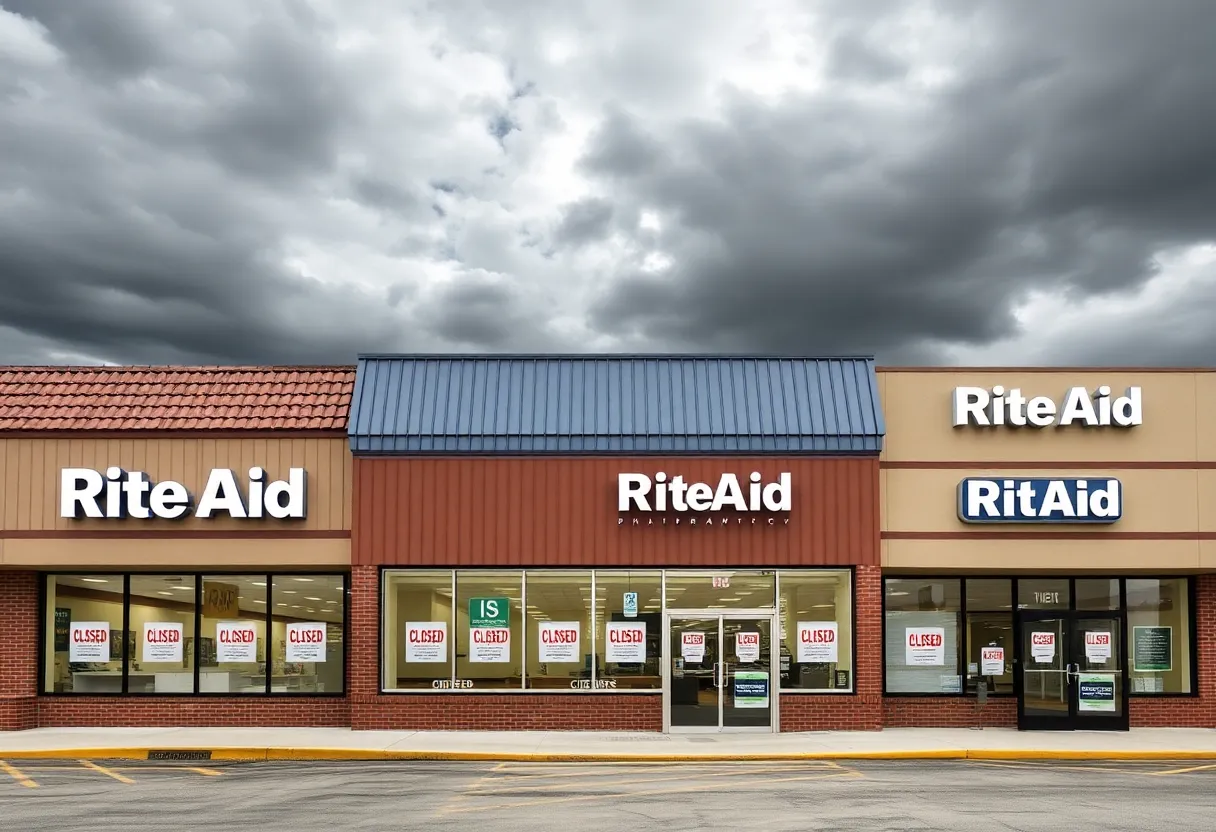News Summary
Rite Aid has announced the closure of 68 stores across seven states, primarily in Pennsylvania, as part of its Chapter 11 bankruptcy restructuring. The decision affects 44 stores in Pennsylvania, leading to nearly 600 layoffs at the company’s headquarters. As the pharmacy chain faces significant financial challenges due to debt and lawsuits stemming from the opioid crisis, it assures customers that pharmacy services will remain accessible through other locations. The closures reflect a broader trend in the retail pharmacy industry and highlight the company’s efforts to stabilize financially through asset sales.
Pennsylvania – Rite Aid is set to close 68 of its stores across seven states, with the majority located in Pennsylvania. This decision comes as the company has filed for Chapter 11 bankruptcy on May 5, 2023, marking a significant restructuring effort for the struggling pharmacy chain.
Among the 68 closed locations, a substantial 44 stores will be shuttered in Pennsylvania. The closures are part of a larger strategy as Rite Aid aims to navigate its financial challenges stemming from mounting debt and ongoing lawsuits related to the opioid crisis. Despite the store closures, Rite Aid has assured customers that pharmacy services will remain available; however, prescriptions will be transferred to other pharmacies.
Rite Aid currently operates 1,240 stores across 15 states. In addition to the store closures, the company will also lay off nearly 600 employees at its Philadelphia headquarters by June 4. Furthermore, an additional 501 employees will lose their jobs at a Rite Aid location in Etters, York County.
Last week, Rite Aid announced eight specific locations in Pennsylvania that are designated for closure. The process has already begun, with some stores closing in waves; for instance, locations in Harrisburg and Halifax Township have already shut their doors. Liquidation sales have commenced at various locations, with expectations that some will close by late May or early June.
Although Rite Aid has transitioned pharmacy operations in several locations, customers are encouraged to check with their local stores regarding specific closure timelines and to ensure they retrieve prescriptions before the final shutdowns occur. The company aims to continue providing pharmacy services to its customers as much as possible, even during this tumultuous time.
The recent series of closures signals a drastic reduction from Rite Aid’s peak, when the company boasted over 4,500 locations in the early 2000s. This latest wave of closures reflects the ongoing consolidation seen in the retail pharmacy industry—a trend that has forced many chains to reevaluate their viability in an increasingly competitive market.
As Rite Aid pursues a strategic sale of its assets as part of the bankruptcy proceedings, it has notified vendors to cease purchases of goods and services due to its dire financial situation. Bankruptcy courts will oversee the sale of Rite Aid’s assets, with creditors expected to receive partial payments in the future. This transition is part of Rite Aid’s broader plan to maximize the value of its creditors through liquidation sales and asset disposals, aiming to stabilize its financial position.
In summary, Rite Aid’s current circumstances depict a company in significant distress, grappling with massive debt and legal issues while attempting to restructure and preserve some level of service for its customer base. The store closures are not only a significant shift for employees and communities but also represent the potential end of a brand that has historically provided essential services to millions of Americans.
Deeper Dive: News & Info About This Topic
- Patch: Pharmacy Chain Closing Dozens More Stores
- Wikipedia: Rite Aid
- PennLive: Rite Aid Bankruptcy
- Google Search: Rite Aid bankruptcy 2025
- Men’s Journal: Bankrupt Chain Rite Aid
- Google Scholar: Rite Aid closures
- Newsweek: Rite Aid Stores Closing
- Encyclopedia Britannica: Rite Aid
- WWLP: 47 Rite Aid Locations Identified
- Google News: Rite Aid store closures

Author: STAFF HERE PHILADELPHIA WRITER
The PHILADELPHIA STAFF WRITER represents the experienced team at HEREPhiladelphia.com, your go-to source for actionable local news and information in Philadelphia, Philadelphia County, and beyond. Specializing in "news you can use," we cover essential topics like product reviews for personal and business needs, local business directories, politics, real estate trends, neighborhood insights, and state news affecting the area—with deep expertise drawn from years of dedicated reporting and strong community input, including local press releases and business updates. We deliver top reporting on high-value events such as Mummers Parade, Philadelphia Flower Show, and Thanksgiving Day Parade. Our coverage extends to key organizations like the Greater Philadelphia Chamber of Commerce and United Way of Greater Philadelphia, plus leading businesses in telecommunications, food services, and healthcare that power the local economy such as Comcast, Aramark, and Children's Hospital of Philadelphia. As part of the broader HERE network, we provide comprehensive, credible insights into Pennsylvania's dynamic landscape.





